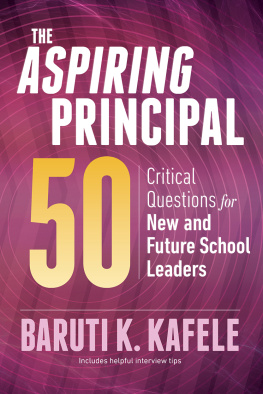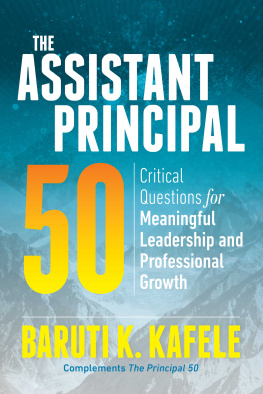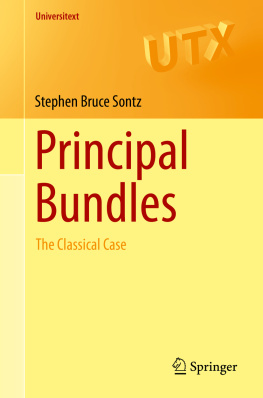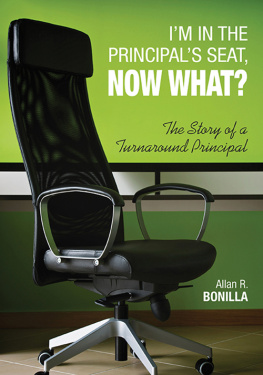Torkil Lauesen - The Principal Contradiction
Here you can read online Torkil Lauesen - The Principal Contradiction full text of the book (entire story) in english for free. Download pdf and epub, get meaning, cover and reviews about this ebook. year: 2020, publisher: Kersplebedeb Publishing, genre: Science. Description of the work, (preface) as well as reviews are available. Best literature library LitArk.com created for fans of good reading and offers a wide selection of genres:
Romance novel
Science fiction
Adventure
Detective
Science
History
Home and family
Prose
Art
Politics
Computer
Non-fiction
Religion
Business
Children
Humor
Choose a favorite category and find really read worthwhile books. Enjoy immersion in the world of imagination, feel the emotions of the characters or learn something new for yourself, make an fascinating discovery.
- Book:The Principal Contradiction
- Author:
- Publisher:Kersplebedeb Publishing
- Genre:
- Year:2020
- Rating:4 / 5
- Favourites:Add to favourites
- Your mark:
- 80
- 1
- 2
- 3
- 4
- 5
The Principal Contradiction: summary, description and annotation
We offer to read an annotation, description, summary or preface (depends on what the author of the book "The Principal Contradiction" wrote himself). If you haven't found the necessary information about the book — write in the comments, we will try to find it.
The Principal Contradiction — read online for free the complete book (whole text) full work
Below is the text of the book, divided by pages. System saving the place of the last page read, allows you to conveniently read the book "The Principal Contradiction" online for free, without having to search again every time where you left off. Put a bookmark, and you can go to the page where you finished reading at any time.
Font size:
Interval:
Bookmark:
The Principal Contradiction
by Torkil Lauesen
Translated by Gabriel Kuhn
The Principal Contradiction
By Torkil Lauesen
Translation by Gabriel Kuhn
ISBN 978-1-989701-06-5
Published in 2020 by Kersplebedeb
Copyright Torkil Lauesen
This edition Kersplebedeb
All rights reserved
To order copies of the book:
Kersplebedeb
CP 63560, CCCP Van Horne
Montreal, Quebec
Canada
H W H
Contents
Dialectical Materialism as a Tool for Analysis and Strategy
Dialectical materialism is a philosophy, but not just for intellectual pleasure in ivory towers. Dialectical materialism has found its philosophers everywhere: among activists, politicians, academics, and guerilla fighters. The use of dialectical materialism has spread globally as a tool for changing the world.
In 1972, I participated in a study circle on dialectical materialism, focusing on the concept of contradiction. I was a member of Denmarks Communist Working Circle (Kommunistisk Arbejdskreds, KAK). It felt good to acquire an understanding of how the world was tied together. The main aim of our philosophical studies was to develop the method to properly analyze our impressions from our many travels to the Third World and from studying our own society. In 1975, our reflections led to the article The Principal Contradiction, authored by our groups leader, Gotfred Appel. It outlined the historical forms the principal contradiction had taken historically under capitalism.
For a long time, I have been wanting to revisit this article and present an updated version. In times of overexposure to information and misinformation, I feel a particular need for sharpening the Marxist tools we have in order to analyze capitalism and develop strategies to overcome it. I hope I am not the only one. We cannot rely on mainstream academic research and its methods. Maos concept of contradiction is one of the sharpest tools we will find.
My use of dialectical materialism focuses on social analysis. I will not deal with dialectical materialisms relevance for the natural sciences. I use dialectical materialismparticularly the concept of contradictionto help us understand the dynamics of world history and allow us to draw practical conclusions. We need methods that tie together analysis and practice. The ultimate goal is to develop a strategy that brings us closer to socialism. Marxism can only be properly studied when we are committed to action. The concept of contradiction builds a bridge between theory and practice. It is not just a valuable tool for the analysis of complex relationships; it also tells us how to intervene.
The book you are holding is therefore not just about methodology, but also about using our methods to develop strategy and strengthen our practice. Part I deals with the historical originssocial, political, and economicof dialectical materialism. Part II looks at dialectical materialism as a method. I have tried to make that part concise, simple, and practical. Part III looks at the historical interactions of the principal contradiction with particular contradictions. Part IV talks about how the concept of contradiction can be used to develop strategy.
I would like to thank everyone who read the draft of this text and provided me with comments. I would also like to thank Gabriel Kuhn for an excellent translation and Karl Kersplebedeb for his editorial expertise enhancing the final manuscript.
I. The Roots of Dialectical Materialism
Dialectics has its roots in both Western and Eastern philosophy. Heraclitus (sixth century BC) stated that constant change was the universal condition. You cannot step twice into the same stream, he said.
Hegels dialectic was however full of mysticism and was not focused on the study of society. With historical materialism, Marx retained the Hegelian notion of dialectics being the dynamic driving force, while showing that dialectics should not be concerned solely with categories of thought, as in Hegels philosophy, but should be seen as an active element affecting processes in human history and society.
Dialectical materialism in the modern sense could not emerge before the middle of the nineteenth century. In Marxs philosophical texts, he is well aware of the history of dialectical materialism from materialist thought in ancient Greece to the Romans and the Renaissance to bourgeois philosophy. Each step in the development of society and the productive forces is accompanied by a specific philosophical school. Dialectical materialism only became possible at a certain stage of technological and scientific development.
Dialectical materialism looks at the general laws of how the world acts. This requires knowledge about the world , in the natural, human, and social sciences. Without it, no general laws can be formulated. The rapid development of the productive forces around 1800 and the subsequent leaps in technology and science were crucial for dialectical materialisms understanding of how the world works.
In The Order of Things (1966), a book that deals with concept formation and the emergence of the modern sciences, philosopher and historian Michel Foucault cites a colorful example of the relationship between knowledge and concept formation, referring to the Argentine writer Jorge Luis Borges:
This book first arose out of a passage in Borges, out of the laughter that shattered, as I read the passage, all the familiar landmarks of thoughtour thought, the thought that bears the stamp of our age and our geographybreaking up all the ordered surfaces and all the planes with which we are accustomed to tame the wild profusion of existing things and continuing long afterwards to disturb and threaten with collapse our age-old definitions between the Same and the Other.
In said passage, Borges provides an example of the categorization of animals, allegedly taken from an old Chinese encyclopedia with the name Celestial Emporium of Benevolent Knowledge :
There are 14 categories of animals:
1. Those that belong to the Emperor
2. Embalmed ones
3. Those that are trained
4. Suckling pigs
5. Mermaids (or Sirens)
6. Fabulous ones
7. Stray dogs
8. Those that are included in this classification
9.Those that tremble as if they were mad
10. Innumerable ones
11. Those drawn with a very fine camel hair brush
12. Et cetera
13. Those that have just broken the flower vase
14. Those that, at a distance, resemble flies
Doubts have been raised about the authenticity of Borgess source. Perhaps it was invented by Borges just to make a point about cultural context and the randomness of concept formation. Be that as it may, we see the same wild mix in the cabinets of curiosities belonging to Europes absolute monarchs in the seventeenth and eighteenth centuries; they included natural materials, archeological finds, machines, works of art, and religious objects, all thrown together. Only later did science demand specialized museums.
The late eighteenth and early nineteenth centuries were characterized by numerous scientific breakthroughs and the organization of knowledge into modern academic disciplines. The Earths geological history, biological cells, the origin of species, and thermodynamics were all discoveries that strengthened philosophical materialism. There were also significant developments in the social sciences. In economics, scholars like Adam Smith ( The Wealth of Nations , 1776), Thomas Malthus ( An Essay on the Principle of Population , 1798), Jean-Baptiste Say ( A Treatise on Political Economy; or The Production, Distribution, and Consumption of Wealth , 1803), David Ricardo ( Principles of Political Economy and Taxation , 1817) made groundbreaking contributions, while John Stuart Mill lay the theoretical foundations for economic and political liberalism. Marxs work was often a direct response to these authors; for instance, the concept of evolution impacted the understanding of capitalism, as expressed in the following quote from The Communist Manifesto (1848):
Next pageFont size:
Interval:
Bookmark:
Similar books «The Principal Contradiction»
Look at similar books to The Principal Contradiction. We have selected literature similar in name and meaning in the hope of providing readers with more options to find new, interesting, not yet read works.
Discussion, reviews of the book The Principal Contradiction and just readers' own opinions. Leave your comments, write what you think about the work, its meaning or the main characters. Specify what exactly you liked and what you didn't like, and why you think so.












